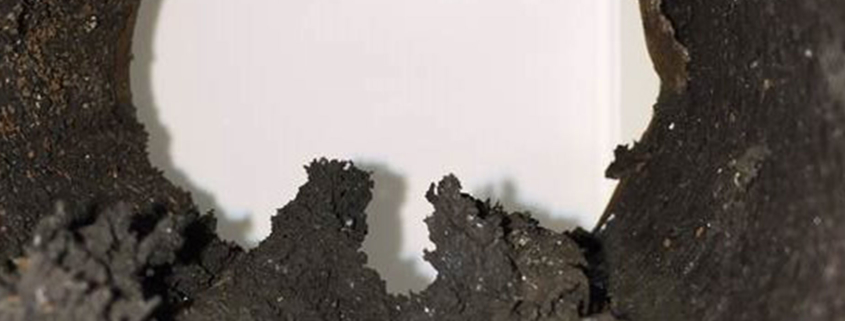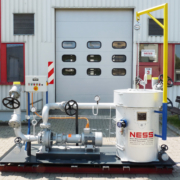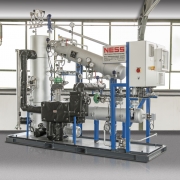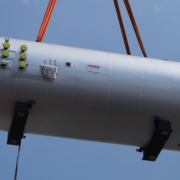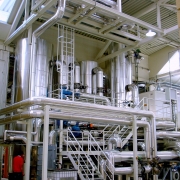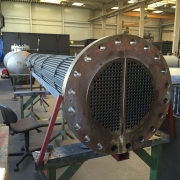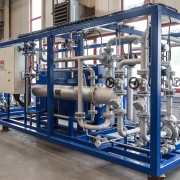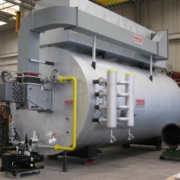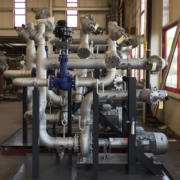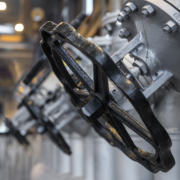FAQ – Deposits in thermal oil systems
What can I do about deposits and how to proceed best?
This FAQ area includes some general questions and answers on and around the topic of deposits in thermal oil systems, what they are, how they are caused and how they affect the thermal oil system in the end. Moreover, we describe the advantages of constant oil cleaning and how you can avoid the formation of deposits in the best way.
- How can impurities arise in the thermal oil and which reasons does this have?
- Which effects do these small particles have in the thermal oil?
- How do I determine the degree of pollution of my oil?
- What can I do about the contamination?
- Oil filtration as preventive action against deposits in the system?
How can impurities arise in the thermal oil and which reasons does this have?
Especially in new systems, it often happens that shavings and metal particles of the inner wall of the pipes and the abrasion of pumps and fittings pollute the oil from the beginning. Therefore, it is optimal to filter the thermal oil already from the beginning.
Later – during the running operation of the system – oxidation products occur already from 80 °C and reaction products are generated from 250 °C. These particles (> 40µm), e.g. oil coal or coke, are clearly visible without a microscope as well.
Many of these mentioned particles are too small for the strainers upstream the pumps and control valves.
Back to Index
Which effects do these small particles have in the thermal oil?
In the long term, these particles, contained in the oil, impair the operating safety and the efficiency of the heat transfer oil systems. Impurities and deposits reduce the flow rate and increase wear. In the worst case, defects on heaters, pumps, sealings and valves will be the consequence. In addition, the core function – heat transfer – will be impaired strongly.
Back to Index
How do I determine the degree of pollution of my oil?
The degree of pollution can be determined by an oil analysis as per DIN 51551. In this analysis, the coke residue is determined as per Conradson. This value is a very good indicator for the pollution with fine particles of the oil and the system.
Back to Index
What can I do about the contamination?
The conventional method to remove – at least a part of the contamination – from the thermal oil system is the partial replacement of the used thermal oil. In this case, part of the oil is replaced by fresh oil, whereby a certain percentage of the particles in the oil will be discharged out of the system. However, this solution does not replace the filtration and is only a short-term solution, mostly in case of an emergency. Already “cracked” or not discharged particles further remain in the system. In addition, in some circumstances, the oil change is associated with a standstill of the system and – depending on the oil used – it causes high running costs.
A fine filter with a mesh size smaller than the standard strainer , e.g. 1000-1600 μm, can remove most particles from the system. For comparison: The standard mesh size of the NESS Fine filter stations is 15 μm, i.e. only a fraction of the normal strainer. With this, the particles will be filtered out excellently. Correctly intergraded, this solution has the advantage that it can be carried out during the running operation of the system.
Back to Index
Oil filtration as preventive action against deposits in the system?
Exactly! The integration of a Fine filter station in your thermal oil system ensures that particles are removed from the beginning and with this, the formation of deposits, e.g. in heat exchangers, on inner pipe walls, etc., will be avoided in the best possible way.
Using the method, continuous filtration constantly provides for operating safety and efficiency and actively counteracts defects on heaters, pumps, sealings, and valves.
Back to Index
Other FAQ topics that might interest you
NESS FF300 / FF500
Fine filter station FF300 / FF500 for
removing of contamination in thermal oil

